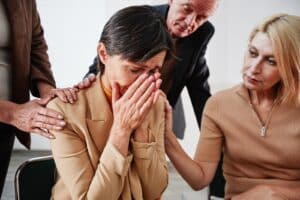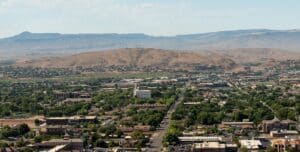Picture this: You’re walking down the street, minding your own business, when suddenly you slip on a wet patch of sidewalk and crash to the ground. The pain is immediate and intense, and you know right away that you’ve sustained a serious injury. This scenario is all too common, with millions of emergency room visits each year resulting from slip and fall accidents. These incidents can have lasting consequences for victims, especially older adults and those with pre-existing conditions. In this blog post, we’ll explore the reality of slip and fall injury risks in 2023 and discuss the responsibilities of property owners in preventing such accidents.
Short Summary
- Slip and fall accidents can lead to serious injuries, with property owners having a responsibility to ensure safety for visitors.
- Victims of slip and falls may be entitled to economic & non-economic damages, which an experienced personal injury lawyer can help assess.
- Property owners & individuals should take measures such as addressing hazards promptly & exercising caution in hazardous areas to prevent slip and fall accidents.
The Reality of a Slip and Fall Injury
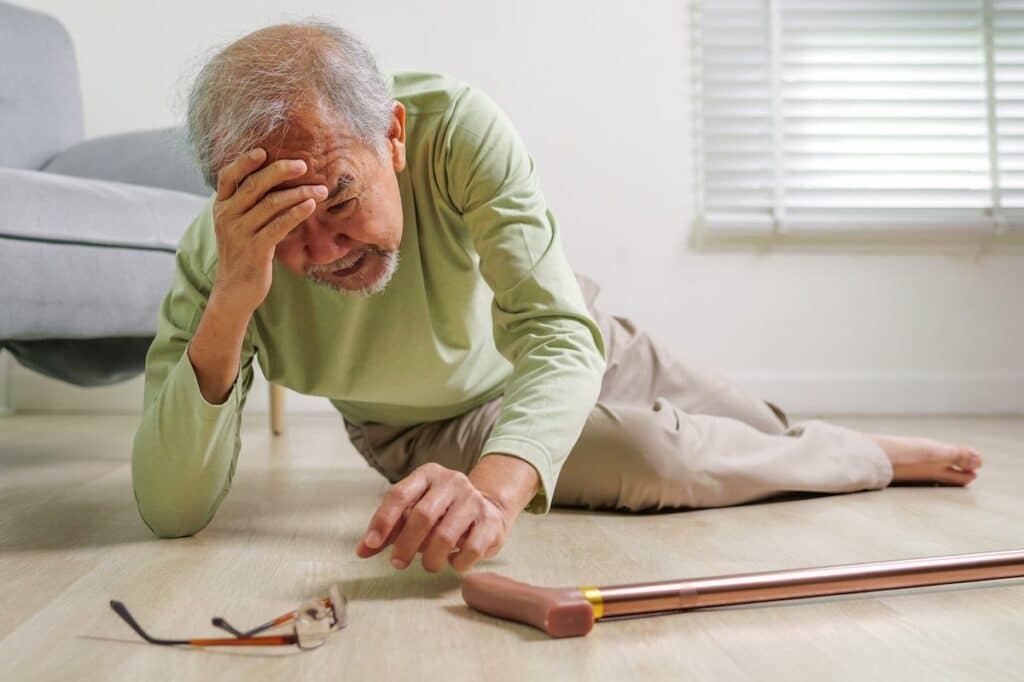
Slip and fall injuries are a significant concern in today’s world, leading to millions of emergency room visits annually. These accidents can result in a wide range of serious injuries, such as:
- traumatic brain injury
- spinal cord injuries
- broken hips
- fractures
- sprains and strains
- cuts and bruises
In some cases, slip and fall accidents can even result in mortality. The consequences of a slip and fall accident can be life-altering for victims and their families, with extensive medical treatment, rehabilitation, and long-term physical and emotional challenges.
Premises liability is the legal principle underlying slip and fall lawsuits, which holds that property owners have a responsibility to ensure a safe environment for visitors. Vulnerable populations, such as older adults and those with pre-existing conditions, are particularly at risk for slip and fall injuries.
As we move through this discussion, we’ll examine the responsibilities of property owners in preventing slip and fall accidents and the steps victims can take to pursue a claim.
Serious Injuries
The most frequent grave injuries resulting from slip and fall accidents include fractures, head injuries, and other fall-related injuries. When such an injury occurs, victims often require comprehensive medical treatment and rehabilitation, including surgery, physical therapy, and ongoing care. These interventions can lead to significant medical bills and a substantial financial burden on the injured person and their family.
In addition to the immediate physical pain and suffering, serious injuries from slip and fall accidents can have long-term consequences. Chronic pain, disability, and psychological trauma can impact a person’s quality of life for years to come. These lasting effects underscore the importance of understanding the risks associated with slip and fall accidents and the need for property owners to prioritize safety.
Vulnerable Populations
Individuals of advanced age and those with pre-existing conditions are especially susceptible to slip and fall injuries. Their physical frailty and weakened immune systems can make them more prone to sustaining severe injuries from a slip and fall accident. It’s important for property owners to recognize this increased risk and take appropriate measures to ensure the safety of these vulnerable visitors.
Falls are the primary cause of injury-related death among adults over the age of 65, according to the CDC. This alarming statistic highlights the critical need for prevention and awareness efforts, as well as the importance of holding property owners accountable for providing a safe environment.
An experienced attorney can help older adults and other vulnerable populations navigate the legal process and seek compensation for their injuries.
Property Owner Responsibilities
Property owners have a legal obligation to identify and rectify hazards on their premises, as well as to inform visitors of potential dangers. This duty of care falls under the concept of premises liability, which is crucial for accident victims seeking compensation. Property owners must maintain a safe environment for all visitors, whether they are invitees, licensees, or even trespassers in some cases.
In addition to identifying and correcting hazards on their own and others’ property, property owners must also provide clear warnings and communicate potential dangers to visitors. Failure to do so can result in liability for any injuries sustained due to their negligence.
In the following sections, we’ll delve deeper into the specific responsibilities of property owners in terms of hazard identification, correction, and communication.
Slip and Fall Injury Hazard Identification and Correction
Some of the most common hazards that can cause slip and fall accidents include wet or slippery floors, uneven surfaces, and inadequate lighting. Property owners must consistently inspect their property for potential hazards and take necessary steps to rectify them, thereby ensuring a safe environment for visitors.
By proactively addressing these hazards, property owners not only protect visitors from injury, but also shield themselves from potential legal liability. Regular inspections, maintenance, and repairs are essential in upholding a property owner’s duty of care and minimizing the risk of slip and fall accidents.
Warning Signs and Communication
Clear warning signs and effective communication about potential hazards play a crucial role in preventing slip and fall accidents and reducing property owner liability. Recommended practices for providing warning signs include:
- Utilizing high-contrast safety signs with striking type, vibrant colors, and thick borders
- Situating signs in areas where slip and fall accidents are likely to take place
- Eliminating signs when the hazard has been rectified
Humorous warnings may also be more effective than straightforward warning signs. By alerting visitors to potential hazards in a clear and engaging manner, property owners can help prevent accidents and protect themselves from legal responsibility.
Pursuing a Slip and Fall Injury Claim
Pursuing a slip and fall claim can be a complex process, requiring the victim to prove negligence on the part of the property owner. This involves demonstrating that the property owner caused the hazard or was aware of it, or reasonably should have been aware of it, and that the hazard resulted in injury to the victim due to their negligence. Working with a skilled personal injury lawyer can be invaluable in navigating the legal process and building a strong case for compensation.
Compensation for slip and fall victims can vary depending on the severity of the injury and the circumstances of the accident. In the following sections, we’ll explore the different types of compensation available, including economic and non-economic damages, and discuss the factors that can influence the amount awarded.
Proving Negligence
To succeed in a slip and fall claim, victims must prove that the property owner was aware of the hazard and failed to take appropriate action to address it. This involves establishing the four elements of negligence.
- Duty of care
- Breach of duty
- Causation
- Damages
Proving negligence can be challenging, but a skilled personal injury lawyer can help gather the necessary evidence and build a strong case on the victim’s behalf.
In addition to proving negligence, slip and fall victims may also need to address the issue of contributory negligence. This occurs when the injured party is partly responsible for their own injury, such as by wearing inappropriate footwear or failing to exercise proper care when walking. An experienced attorney can help navigate these complexities and advocate for a fair outcome in the case.
Working with a Personal Injury Lawyer
Collaborating with a personal injury lawyer for a slip and fall claim can greatly benefit victims in their pursuit of a personal injury claim. A skilled attorney can assist in:
- Recovering compensation for losses
- Managing insurance claims
- Examining the case
- Procuring evidence to back up the claim
- Negotiating with insurance companies
- Litigating the case if necessary
A personal injury lawyer can provide invaluable guidance and support throughout the legal process, including:
- Helping victims navigate the complexities of their case
- Advocating for their best interests
- Assisting with paperwork and documentation
- Gathering evidence to support their claim
- Negotiating with insurance companies
- Representing them in court, if necessary
With the assistance of an experienced attorney, slip-and-fall victims can focus on their recovery while their legal representative works diligently to secure the compensation they deserve.
Compensation for Slip and Fall Victims
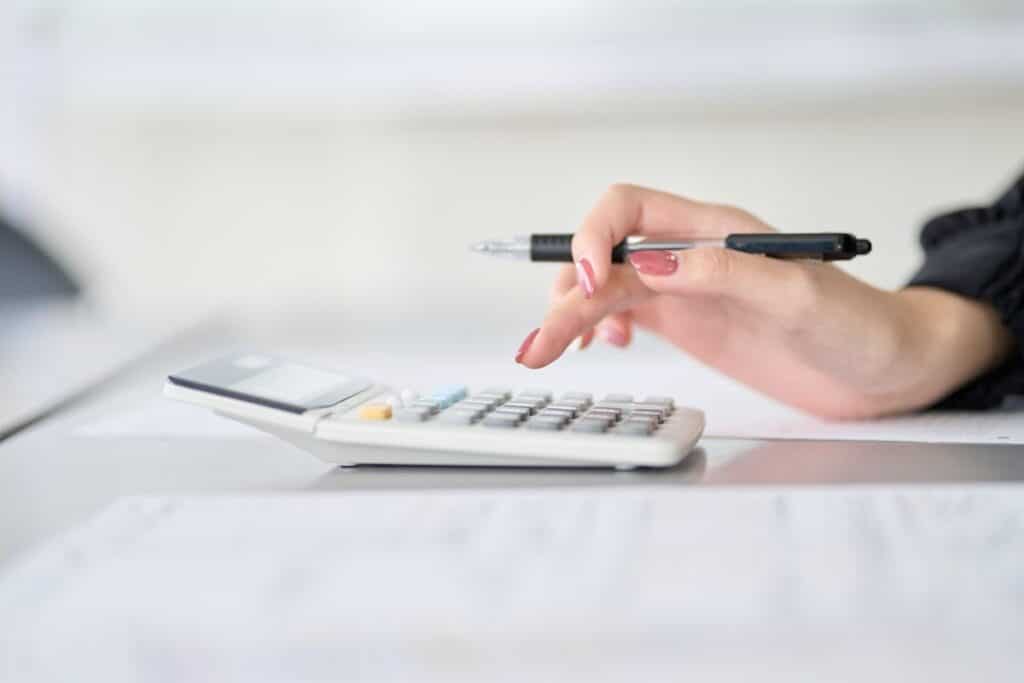
Compensation for slip and fall victims can include both economic and non-economic damages, depending on the severity of the injury and the circumstances of the accident. Economic damages refer to the financial losses resulting from an injury, such as medical expenses, lost wages, and property damage. Non-economic damages, on the other hand, encompass less tangible losses like pain and suffering, emotional distress, and diminished quality of life.
The amount of compensation awarded in a slip-and-fall case can vary greatly, with many cases settling for an amount between $10,000 and $50,000. Factors that can influence the settlement amount include the severity of the injury, the degree of negligence on the part of the property owner, and the skill of the personal injury lawyer representing the victim.
Economic Damages
Economic damages in slip and fall cases can cover a wide range of financial losses, including medical expenses, lost wages, and property damage. These damages are typically calculated based on the actual costs incurred by the victim as a result of the injury, such as hospital bills, medication costs, and lost income due to missed work.
In some cases, economic damages can also include compensation for lost earning capacity and future medical expenses, particularly if the victim’s injuries are severe or result in long-term disability. A skilled personal injury lawyer can help victims accurately calculate and present these damages in their claim, ensuring they receive the full compensation they deserve.
Non-Economic Damages
Non-economic damages in slip and fall cases may include compensation for pain and suffering, emotional distress, and loss of enjoyment of life. Unlike economic damages, non-economic damages are more subjective and can be more challenging to calculate. There are several methods used to determine the value of non-economic damages, including multiplying actual economic damages or using a per diem approach.
While non-economic damages can be more difficult to quantify, they are an important aspect of a slip and fall claim, as they address the full impact of the injury on the victim’s life. A skilled personal injury lawyer can help to effectively present non-economic damages in a slip and fall case, ensuring that the victim receives fair compensation for their suffering.
Preventing Slip and Fall Accidents
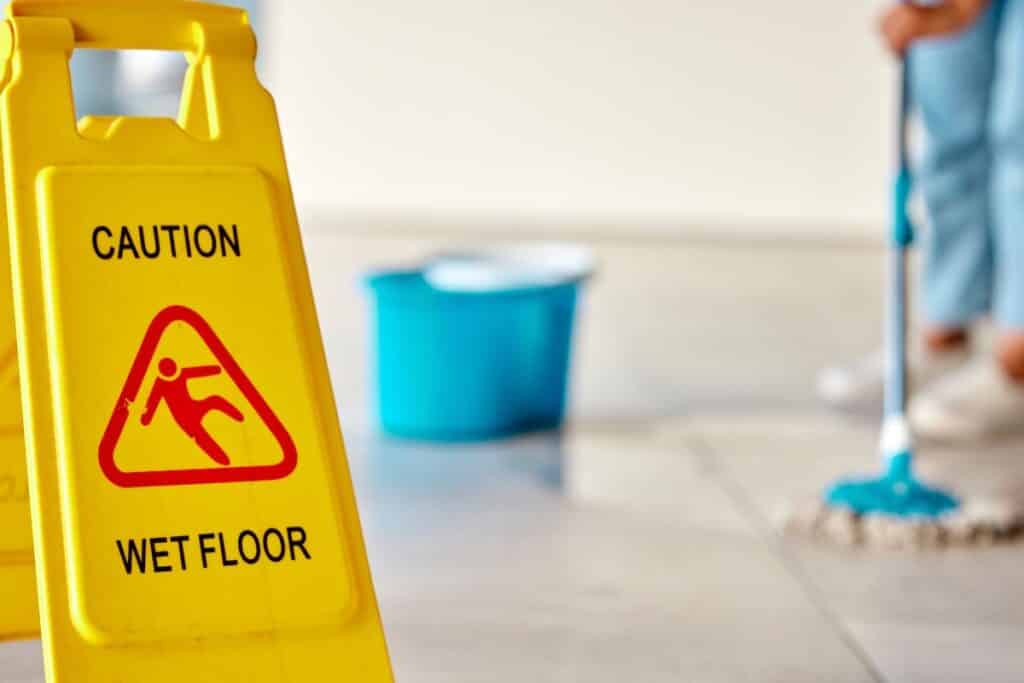
Preventing slip and fall accidents involves both personal safety measures and best practices for property owners to maintain a safe environment. The primary contributors to slip and fall accidents include slippery surfaces, inadequate lighting, and inadequate footwear. By addressing these issues and fostering a culture of safety and awareness, both individuals and property owners can play a role in reducing the risk of slip and fall accidents.
In the following sections, we’ll discuss specific steps that can be taken by both individuals and property owners to prevent slip and fall accidents. Some strategies include:
- Wearing appropriate footwear
- Maintaining well-lit walkways
- Installing handrails on stairs
- Clearing walkways of debris and obstacles
- Using non-slip mats or rugs
- Promptly addressing spills or wet surfaces
- Regularly inspecting and repairing uneven or damaged flooring
By implementing these measures, you can help mitigate the risk of slip and fall accidents and promote a safer environment.
Personal Safety Measures
Individuals can reduce their risk of slip and fall accidents by adopting a few simple personal safety measures. Here are some tips to follow:
- Wear appropriate footwear with proper traction.
- Pay close attention to your surroundings and avoid distractions while walking.
- Exercise proper care when navigating potentially hazardous areas, such as wet floors or uneven surfaces.
By following these tips, you can help prevent slip and fall accidents.
By taking these precautions and being mindful of their environment, individuals can greatly reduce their risk of experiencing a slip and fall accident. Prevention is key, and personal vigilance plays a crucial role in minimizing the likelihood of injury.
Property Owner Best Practices
Property owners can also play a significant role in preventing slip and fall accidents by:
- Regularly inspecting and maintaining their premises
- Addressing hazards promptly
- Providing clear warnings about potential dangers
- Keeping walkways clear of tripping hazards
- Ensuring sufficient lighting
- Providing non-slip mats in entryways.
By adhering to these best practices and maintaining a commitment to safety, property owners can protect both their visitors and themselves from the risks and consequences of slip and fall accidents. A proactive approach to hazard identification, correction, and communication can go a long way in fostering a safe environment for all.
Summary
In conclusion, understanding slip and fall injury risks and the responsibilities of property owners is essential in today’s world. With millions of emergency room visits each year due to slip and fall accidents, prevention and awareness efforts are crucial. By taking personal safety measures, adopting property owner best practices, and working with skilled personal injury lawyers when necessary, we can all contribute to reducing the risk of slip and fall accidents and their devastating consequences. Let’s work together to create safer environments for ourselves and our communities.
Frequently Asked Questions about a Slip and Fall Injury
What are the most common injuries from slip and fall?
Slip and fall injuries are typically associated with bruises, strains, sprains, fractures, dislocations and even head trauma. More serious injuries can include broken bones, concussions, back injuries, and in some cases, death.
Therefore, it’s important to take preventive measures to avoid slip and fall accidents.
What is the average compensation for a slip and fall?
On average, slip and fall settlements range from $10,000 to $50,000. Victims of slip and falls may be entitled to compensation for lost wages, medical bills, and other damages, so it is important to pursue the appropriate legal steps if you have been injured in a slip and fall accident.
It is important to understand the legal process and the potential compensation you may be entitled to. Consulting with an experienced personal injury attorney can help you understand your rights and the best way to recover.
What to do after slipping and falling?
After a slip and fall, the most important thing to do is assess whether you are injured. Take a few moments to check for pain or discomfort in any part of your body before attempting to stand up.
If you find yourself unable to get up, seek help immediately and remain warm while you wait.
What are the responsibilities of property owners in preventing slip and fall accidents?
Property owners have the responsibility to proactively reduce the risk of slip and fall accidents by regularly inspecting their premises, promptly addressing any hazardous conditions they find, and providing adequate warning to visitors.
It is important for property owners to take the necessary steps to ensure the safety of their visitors. This includes inspecting the premises regularly, addressing any hazardous conditions that are found, and providing adequate warning to visitors.
By taking these steps, property owners can reduce their property taxes.
What steps can individuals take to prevent slip and fall accidents?
Being mindful of environmental conditions, such as surfaces that are wet or uneven, can help individuals prevent slip and fall accidents. To protect themselves, people should also ensure they have good footwear.
Maintaining a safe walking speed and watching where they are going are also important steps to avoid accidents.


